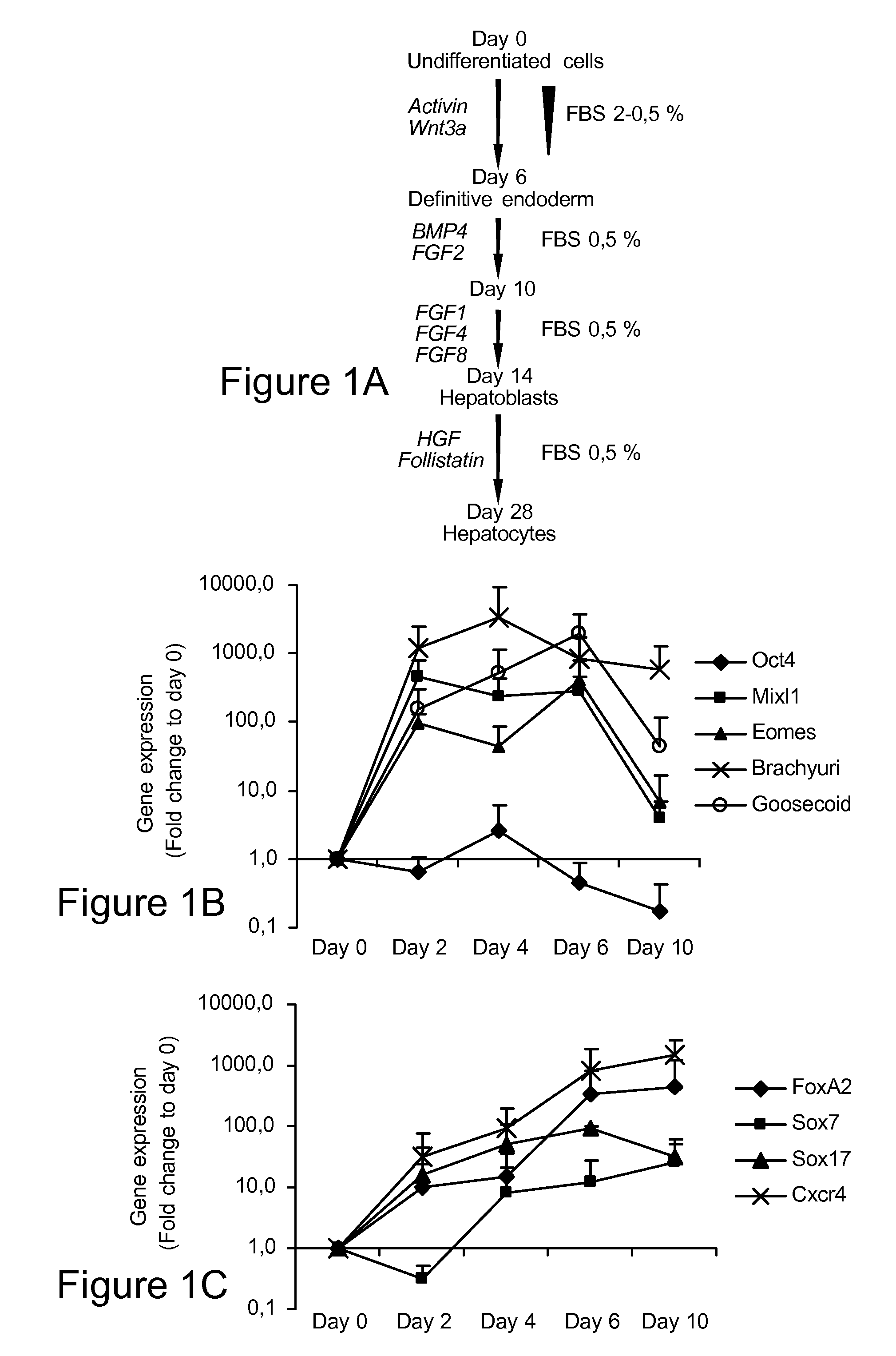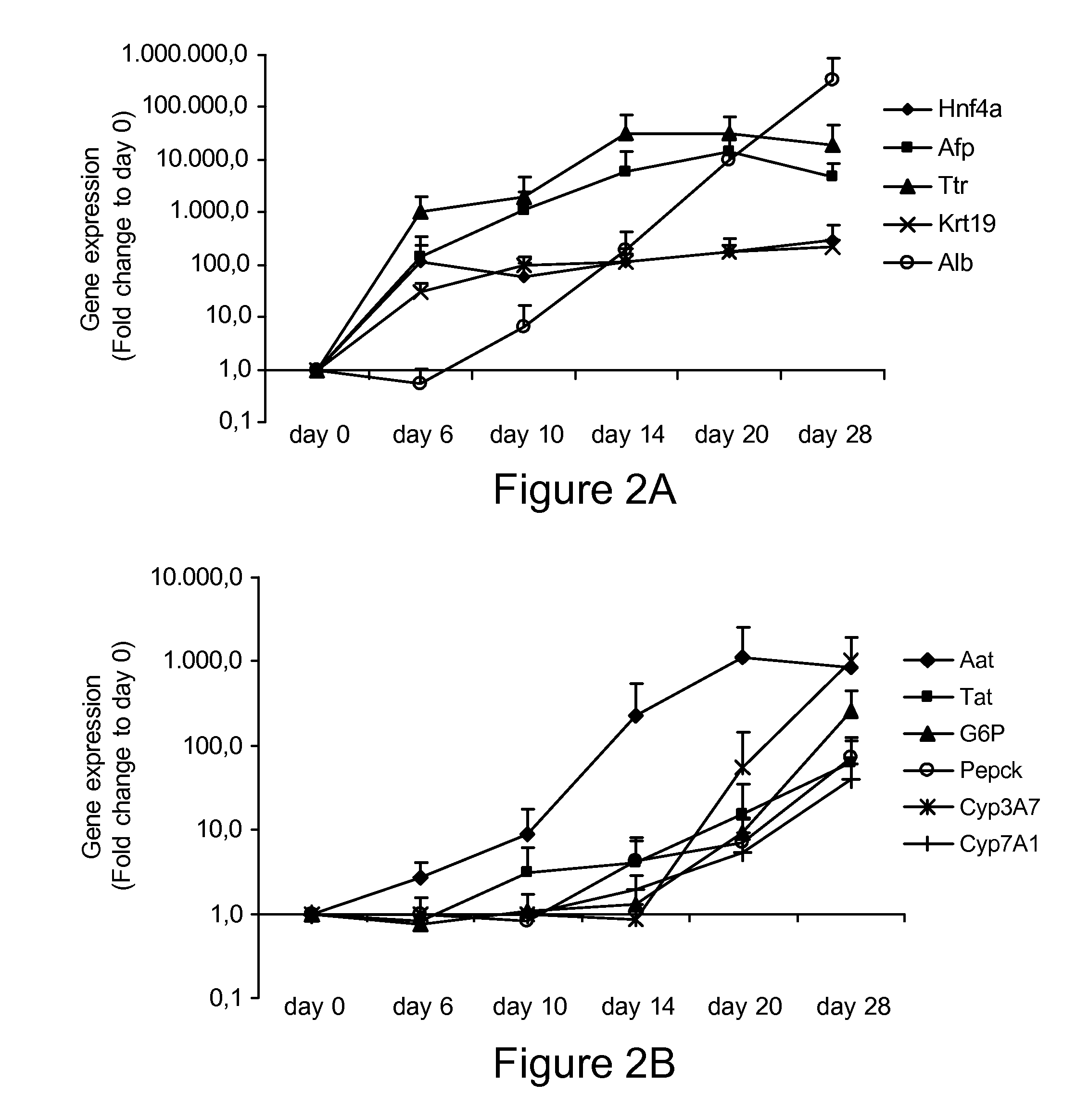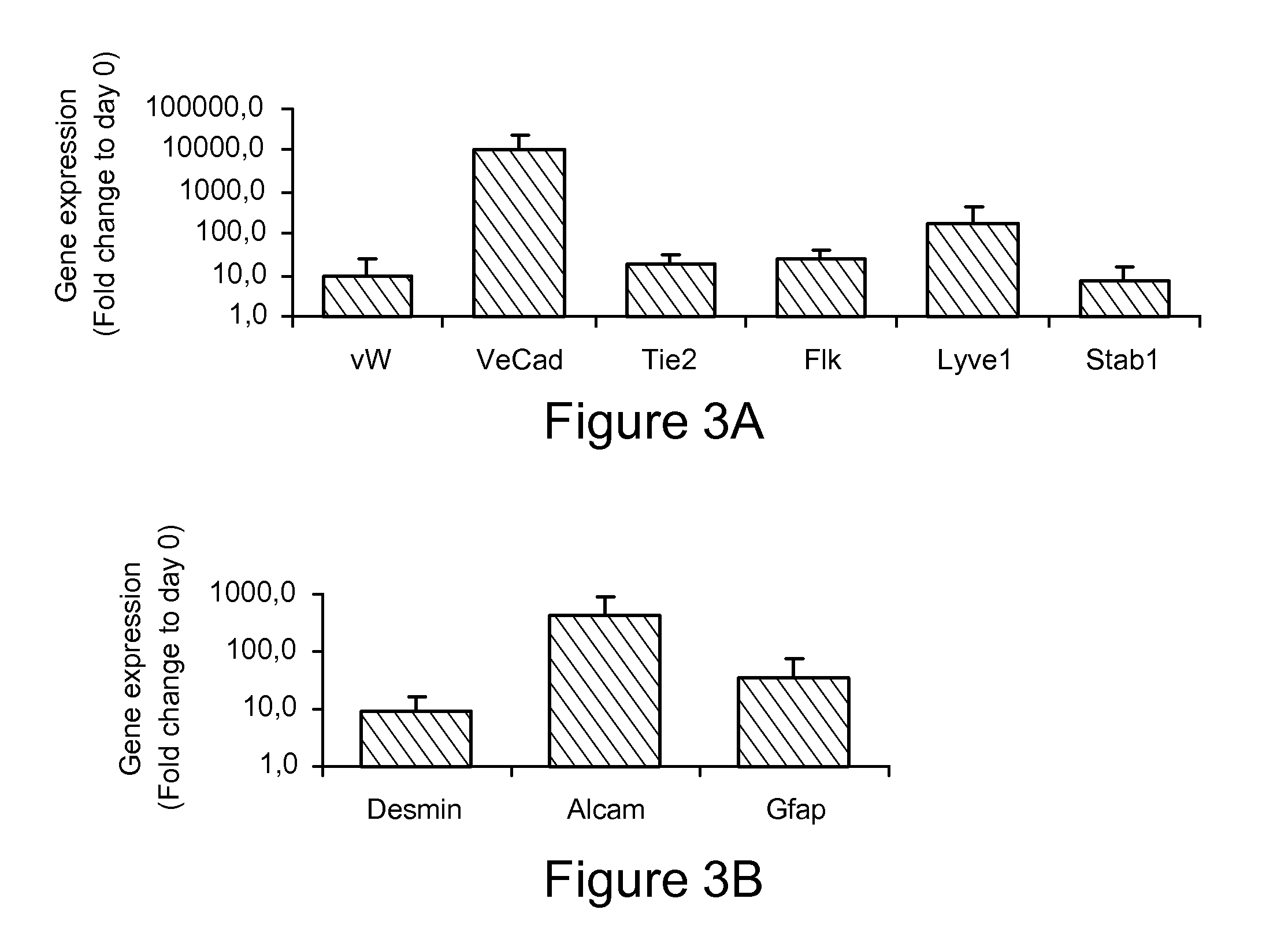Methods for Differentiating Cells into Hepatic Stellate Cells and Hepatic Sinusoidal Endothelial Cells, Cells Produced by the Methods, and Methods for Using the Cells
a technology of hepati differentiating cells, which is applied in the field of differentiating cells into hepatic sinusoidal endothelial cells, cells produced by the methods, and methods for using cells. it can solve the problems of hepatic cell mass loss below a critical level, liver failure remains a devastating syndrome, and treatment is limited by worldwide shortage of donor organs
- Summary
- Abstract
- Description
- Claims
- Application Information
AI Technical Summary
Problems solved by technology
Method used
Image
Examples
example 1
Directed Differentiation of Murine Induced Pluripotent Stem Cells to Cells Having Hepatocyte, Hepatic Stellate, and Hepatic Sinusoidal Endothelial Phenotype
[0240]Induced pluripotent stem (iPS) cells exert phenotypic and functional characteristics of embryonic stem cells. It is useful to develop differentiation procedures to induce iPS cell differentiation. This Example describes the differentiation of mouse iPS cells to hepatocyte-like cells in vitro using a differentiation procedure. By sequential stimulation with cytokines known to play a role in liver development, iPS cells were specified to primitive streak / mesendoderm / definitive endoderm, followed by differentiation to cells with hepatoblast features, and some cells with differentiated hepatocyte-like functional properties, such as albumin secretion, glycogen storage, urea production and inducible cytochrome activity.
[0241]In addition to hepatocyte-like cells, mesodermal cells with characteristics of liver sinusoidal endotheliu...
example 2
[0262]Expression of (hepatic sinusoidal) endothelial genes is found maximally at d20. Human ESC were cultured sequentially with Activin A / Wnt3a, BMP4 / FGF2, FGF1, 4 and 8, and HGF / Follistatin, in 2% serum on matrigel coated plates for 28 days. On d0, 6, 10, 14, 20 and 28, cells were harvested and transcripts found in healthy liver-derived of activated hepatic sinusoidal endothelial cells (HSEC) quantified using RT-qPCR. The results show that there is maximal up-regulation of HSEC genes on day 20 of differentiation. See FIG. 4.
[0263]Expression of hepatic stellate genes (quiescent and some non-quiescent) is found maximally at d20. Human ESC were cultured sequentially with Activin A / Wnt3a, BMP4 / FGF2, FGF1, 4 and 8, and HGF / Follistatin, in 2% serum on matrigel coated plates for 28 days. On d0, 6, 10, 14, 20 and 28, cells were harvested and transcripts found in quiescent and activated hepatic stellate cells (HSC) (see table) quantified using RT-qPCR. The results show that there is maximal...
example 3
[0270]As an alternative to the VE-cadherin sorting, endothelial cells were isolated from hESC differentiations (using the four-step differentiation protocol, i.e., with the FGFs) by FACS with a Tie2 antibody or a combination of Tie2 and CD31 antibodies. The sorted endothelial cells were analyzed by qRT-PCR on day 14 or day 20 of the differentiation process. On day 14, ˜5% of the differentiated cultures expressed Tie2. On day 20, ˜25% of the differentiated cultures expressed Tie2 and ˜1% co-expressed Tie2 and CD31. Expression of LSEC marker CD32b was upregulated in time in the Tie2 fraction. Compared to the Tie2 fraction, CD32b and Stab1 expression was higher in the Tie2+CD31+fraction at day 20 of differentiation.
PUM
| Property | Measurement | Unit |
|---|---|---|
| concentration | aaaaa | aaaaa |
| concentration | aaaaa | aaaaa |
| concentration | aaaaa | aaaaa |
Abstract
Description
Claims
Application Information
 Login to View More
Login to View More - R&D
- Intellectual Property
- Life Sciences
- Materials
- Tech Scout
- Unparalleled Data Quality
- Higher Quality Content
- 60% Fewer Hallucinations
Browse by: Latest US Patents, China's latest patents, Technical Efficacy Thesaurus, Application Domain, Technology Topic, Popular Technical Reports.
© 2025 PatSnap. All rights reserved.Legal|Privacy policy|Modern Slavery Act Transparency Statement|Sitemap|About US| Contact US: help@patsnap.com



